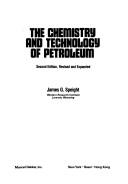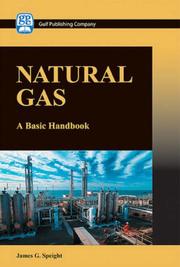| Listing 1 - 10 of 98 | << page >> |
Sort by
|

ISBN: 0824784812 Year: 1991 Publisher: New York Dekker
Abstract | Keywords | Export | Availability | Bookmark
 Loading...
Loading...Choose an application
- Reference Manager
- EndNote
- RefWorks (Direct export to RefWorks)
Petroleum technology. Petrochemistry --- Petroleum --- -Coal-oil --- Crude oil --- Oil --- Caustobioliths --- Mineral oils --- Refining --- -Refining --- Coal-oil --- Petroleum refining --- Petroleum industry and trade --- Petroleum products --- Petroleum.

ISBN: 0824715063 9780824715069 Year: 1981 Volume: 4 Publisher: New York, N.Y.: Dekker,
Abstract | Keywords | Export | Availability | Bookmark
 Loading...
Loading...Choose an application
- Reference Manager
- EndNote
- RefWorks (Direct export to RefWorks)
Petroleum --- Refining --- Desulfurization --- -66.0 --- 665 --- Coal-oil --- Crude oil --- Oil --- Caustobioliths --- Mineral oils --- -Desulphurization --- Chemical engineering. Chemical production, processing, operations, plant --- Oils. Fats. Waxes. Adhesives. Gums. Resins --- 665 Oils. Fats. Waxes. Adhesives. Gums. Resins --- 66.0 Chemical engineering. Chemical production, processing, operations, plant --- 66.0 --- Refining&delete& --- Desulphurization --- Petroleum - Refining - Desulfurization
Book
ISBN: 1299481124 0124017479 0124045707 9781299481121 9780124045705 9780124017474 Year: 2013 Publisher: Amsterdam, Netherlands : Elsevier,
Abstract | Keywords | Export | Availability | Bookmark
 Loading...
Loading...Choose an application
- Reference Manager
- EndNote
- RefWorks (Direct export to RefWorks)
Unconventional reservoirs of oil and gas represent a huge additional global source of fossil fuels. However, there is much still to be done to improve techniques for their processing to make recovery and refining of these particular energy sources more cost-effective. Brief but readable, Heavy and Extra-heavy Oil Upgrading Technologies provide readers with a strategy for future production (the up-stream) and upgrading (the down-stream). The book provides the reader with an understandable overview of the chemistry and engineering behind the latest developments and technologies in the
Petroleum engineering. --- Heavy oil. --- Petroleum --- Mining engineering --- Petroleum engineering --- Feedstock. --- Technological innovations.
Book
ISBN: 0128006749 0128006307 9780128006740 9780128006306 9781306733205 1306733200 9780128006306 Year: 2014 Publisher: Waltham, Massachusetts ; Oxford, [England] : Gulf Publishing,
Abstract | Keywords | Export | Availability | Bookmark
 Loading...
Loading...Choose an application
- Reference Manager
- EndNote
- RefWorks (Direct export to RefWorks)
High Acid Crudes quickly gets the refinery manager and all other relative personnel up to date on this particular type of feedstock by providing an overview and relevant details of the identification of high acid crudes and their influence on the refinery's process units, especially regarding corrosion potential. Covering the types, effects on the various refining units, and proper acid stripping techniques, High Acid Crudes effectively trains refinery personnel with a quick reference guide for day-to-day use in today's refineries. Due to their discounted value but pote
Oil field chemicals. --- Oil fields. --- Oil wells. --- Chemical & Materials Engineering --- Engineering & Applied Sciences --- Chemical Engineering --- Petroleum --- Refining. --- Wells, Oil --- Gas wells --- Oil fields --- Petroleum engineering --- Oil lands --- Oil pools --- Oilfields --- Petroleum fields --- Mines and mineral resources --- Chemicals --- Petroleum refining --- Petroleum industry and trade --- Petroleum products
Book
ISBN: 0128004150 0128003464 9780128004159 9780128003466 Year: 2014 Publisher: Waltham, Massachusetts ; Oxford, England : Gulf Publishing Company,
Abstract | Keywords | Export | Availability | Bookmark
 Loading...
Loading...Choose an application
- Reference Manager
- EndNote
- RefWorks (Direct export to RefWorks)
According to NACE (National Association of Corrosion Engineers), the total annual cost of corrosion in petroleum refining takes up 3.7 billion in the US alone. Corrosion control is always a challenge for the downstream industry, but as the quality of feedstock is declining due to refineries accepting more of the heavy and shale gas and oil resources that are more readily available today, refinery managers, petroleum and natural gas engineers are unprepared for the new set of corrosion problems that are showing up in their equipment and processing units. Oil and Gas Corrosion Prevention: Fr
Corrosion and anti-corrosives. --- Petroleum engineering -- Equipment and supplies -- Protection. --- Petroleum engineering -- Materials. --- Petroleum industry and trade -- Equipment and supplies -- Corrosion. --- Mechanical Engineering --- Engineering & Applied Sciences --- Metallurgy & Mineralogy --- Oil fields --- Gas fields --- Equipment and supplies --- Corrosion --- Prevention. --- Fields, Gas --- Natural gas fields --- Mines and mineral resources --- Oil lands --- Oil pools --- Oilfields --- Petroleum fields
Book
ISBN: 1299282903 0124017487 0124017207 9780124017481 9781299282902 9780124017207 Year: 2013 Publisher: Amsterdam ; Boston : Elsevier/GPP,
Abstract | Keywords | Export | Availability | Bookmark
 Loading...
Loading...Choose an application
- Reference Manager
- EndNote
- RefWorks (Direct export to RefWorks)
As conventional-oil resources are depleted worldwide, vast heavy oil reserves available in various parts of the world become increasingly important as a secure future energy source. Brief but readable, Heavy Oil Production Processes discusses the latest improvements in production processes including; thermal methods (steam floods, cyclic steam stimulation, SAGD) as well as non-thermal methods (cold flow with sand production, cyclic solvent process, VAPEX). The book begins with an overview of the chemistry, engineering, and technology of heavy oil as they evolve into the twenty-first century
Hydrocarbons -- Research. --- Petroleum -- Analysis. --- Petroleum. --- Heavy oil --- Enhanced oil recovery --- Mechanical Engineering --- Business & Economics --- Engineering & Applied Sciences --- Industries --- Metallurgy & Mineralogy --- Heavy oil. --- Manufacturing processes. --- Industrial processing --- Manufacture --- Process engineering (Manufactures) --- Processes, Manufacturing --- Processing, Industrial --- Production processes --- Industrial arts --- Production engineering --- Machine-tools --- Materials --- Petroleum --- Enhanced oil recovery.
Book
ISBN: 0128499060 9780128499061 9780128018750 0128018755 Year: 2016 Publisher: Cambridge : Gulf Professional Publishing,
Abstract | Keywords | Export | Availability | Bookmark
 Loading...
Loading...Choose an application
- Reference Manager
- EndNote
- RefWorks (Direct export to RefWorks)
Introduction to Enhanced Recovery Methods for Heavy Oil and Tar Sands, Second Edition, explores the importance of enhanced oil recovery (EOR) and how it has grown in recent years thanks to the increased need to locate unconventional resources such as heavy oil and shale. Unfortunately, petroleum engineers and managers aren't always well-versed in the enhancement methods that are available when needed or the most economically viable solution to maximize their reservoir's productivity. This revised new edition presents all the current methods of recovery available, including the pros and cons of each. Expanded and updated as a great preliminary text for the newcomer to the industry or subject matter, this must-have EOR guide teaches all the basics needed, including all thermal and non-thermal methods, along with discussions of viscosity, sampling, and the technologies surrounding offshore applications.
Enhanced oil recovery. --- Oil sands. --- Oil sands --- EOR (Petroleum engineering) --- Improved oil recovery --- Oil fields --- Tertiary recovery of oil --- Bituminous sand --- Oil-bearing sands --- Tar sand --- Oil-shales --- Petroleum --- Enhanced recovery operations --- Production methods --- Geology
Book
ISBN: 0128000899 0127999116 1306291054 9780128000892 9780127999111 9781306291057 Year: 2014 Publisher: Waltham, MA : Gulf Professional Publishing,
Abstract | Keywords | Export | Availability | Bookmark
 Loading...
Loading...Choose an application
- Reference Manager
- EndNote
- RefWorks (Direct export to RefWorks)
World gasification capacity is expected to grow by more than 70% by 2015. While gasification is not a new process, the higher price in crude has lead operators and refineries to look at all possible coal-based technologies for energy conversion, and with the flow of heavy oil, tar sands and other unconventional feedstocks making their way to the refineries for processing, refinery managers and engineers alike must be made aware of how to process these uncommon energy sources. Gasification of Unconventional Feedstocks addresses these unfamiliar feeds and provides a quick and up-to-date reference on the background, process technology and downstream applications required to help refineries maximize profits turning low-value feedstock to beneficial syngas and other fuel products. Clear and comprehensive, Gasification of Unconventional Feedstocks provides engineers and refinery managers with the tools needed to quickly adapt to the more unconventional feedstocks and still maximize their refineries potential. Get up to speed on how to adjust your refinery's processing to unconventional feedstocks Understand the technology necessary to safely and effectively manage unfamiliar feeds Turn low-value product to profit quickly with must-have tips and rules of thumb
Coal gasification --- Biomass gasification --- Oil gasification --- Chemical & Materials Engineering --- Engineering & Applied Sciences --- Chemical Engineering --- Biomass gasification. --- Oil gasification. --- Coal gasification. --- Gasification of biomass --- Biomass energy --- Coal --- Gasification of coal --- Carbonization --- Distillation, Destructive --- Gas manufacture and works --- Gas producers --- Gasification of oil --- Petroleum --- Petroleum gasification --- Oil gas --- Gasification

ISBN: 1933762144 1306134587 0127999841 1601196237 9781601196231 9781933762142 Year: 2007 Publisher: Houston, Tex. Gulf Pub. Co.
Abstract | Keywords | Export | Availability | Bookmark
 Loading...
Loading...Choose an application
- Reference Manager
- EndNote
- RefWorks (Direct export to RefWorks)
Natural gas represents nearly one-quarter of the world's energy resources. More than half of American homesrely on it as their main heating fuel. It serves as the raw material necessary in everyday paints, plastics,medicines and explosives. It produces the cleanest of all fossil fuels. It is natural gas-and everybody shouldacquire a basic understanding of it. This valuable easy-to-use reference supplies all the basics that everyperson should know about the natural gas industry. Introductory engineers, managers and analysts will benefitfrom this informative, practical handbo
Natural gas. --- Gas, Natural --- Sour gas --- Gases, Asphyxiating and poisonous --- Hydrocarbons

ISBN: 0071387773 9780071387774 Year: 2003 Publisher: New York (N.Y.): McGraw-Hill,
Abstract | Keywords | Export | Availability | Bookmark
 Loading...
Loading...Choose an application
- Reference Manager
- EndNote
- RefWorks (Direct export to RefWorks)
"Whether you're tackling problems related to liquid, liquid extraction, process operations, or plant design, this compact, information-dense resource provides all the data chemical engineers need to quickly and easily design industrial chemical processes and equipment." "Based on the classic Perry's Chemical Engineers' Handbook, this step-by-step, time and trouble-saving tool offers: hundreds of the standardized chemical tables and formulas most often needed by professionals and students; information on basic principles and the most commonly used values; valuable tabular and expository reference material; and a handy quick-find format that puts the information you need at your fingertips." -- Jacket.
| Listing 1 - 10 of 98 | << page >> |
Sort by
|

 Search
Search Feedback
Feedback About UniCat
About UniCat  Help
Help News
News